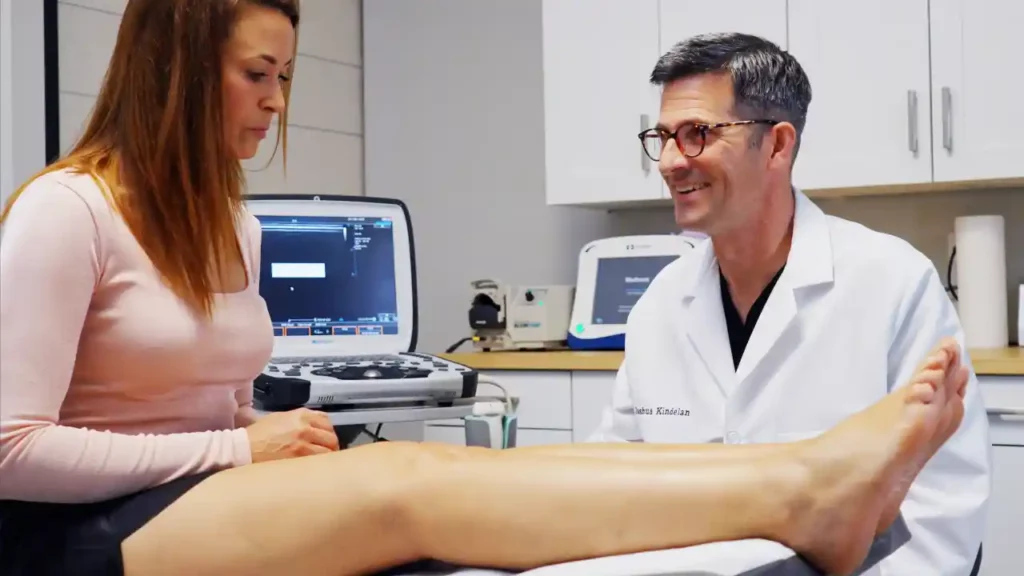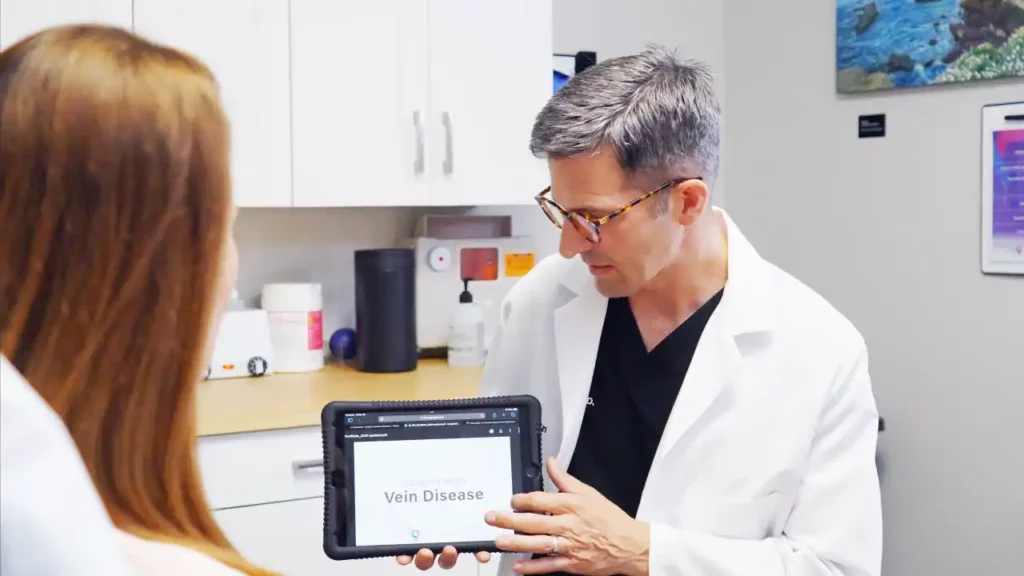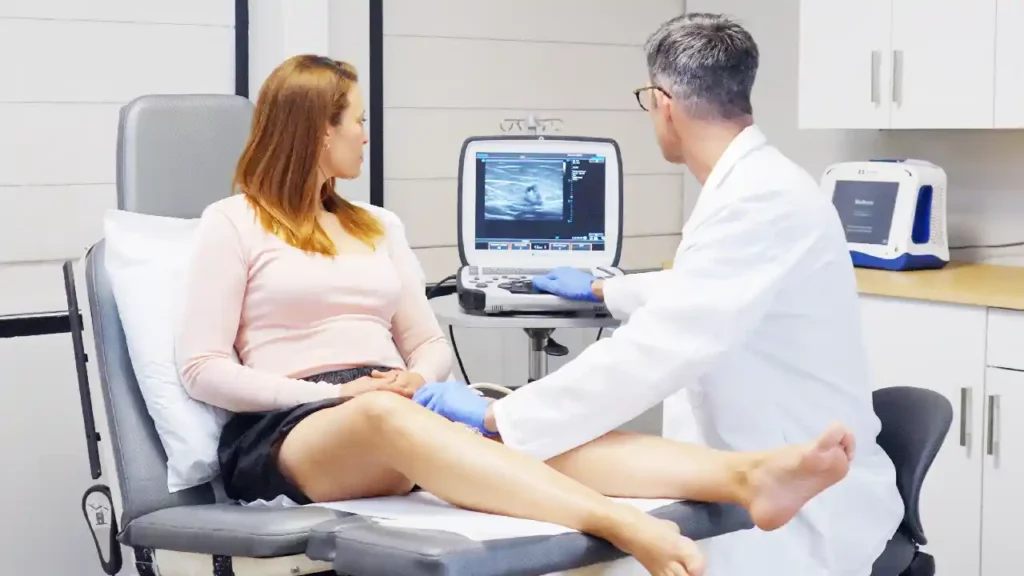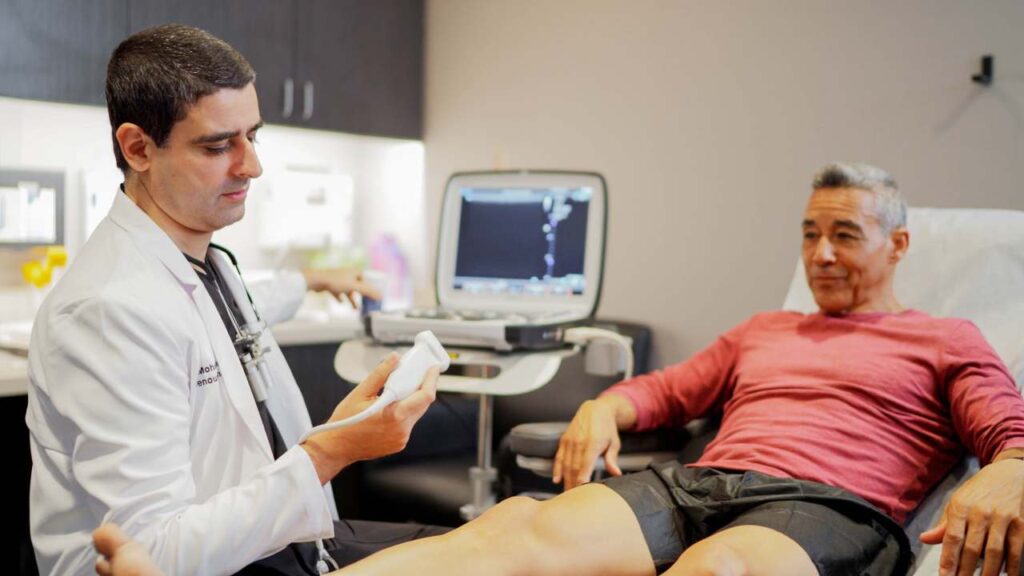What to expect at a vein clinic?
Vein clinics are medical centers specializing in the diagnosis and treatment of vein problems. As such, you can expect vein treatments for your spider veins or varicose veins in all vein clinics. However, each vein treatment clinic follows a unique set of treatment protocols. Some of them focus on cosmetic relief, i.e., they treat spider veins and varicose veins without identifying or addressing underlying vein disease. Whereas others focus on holistic, comprehensive vein treatments. It goes without saying — you should look for vein clinics providing comprehensive vein treatments.
We can’t speak for other vein clinics, but we can provide a step-by-step overview of our vein treatment process. Our vein treatment clinics in California follow a streamlined and comprehensive vein treatment process to ensure optimal and long-lasting results. Our vein doctors always perform thorough consultations and diagnoses to identify the root cause of your vein problems, following which we curate personalized vein treatment plans. Furthermore, we absolutely avoid surgical treatments for varicose veins because they’re needlessly complicated, risky, and relatively ineffective.
Step 1: A thorough vein consultation to understand your concerns
Your vein treatment journey at our vein treatment clinic starts with a thorough consultation. The vein doctor will examine your leg veins to identify the signs and symptoms of vein disease, such as leg heaviness, spider veins, varicose veins, skin discoloration, and leg ulcers. They’ll also ask about your symptoms, such as restless leg syndrome and frequent leg cramps, to determine the likelihood of chronic venous insufficiency.
Step 2: An ultrasound diagnostic scan to identify vein disease
The vein consultation is followed by an ultrasound diagnostic test, known as duplex ultrasound. The vein doctor will move the ultrasound handheld device over your legs to visualize the blood flow in your leg veins, which will reveal the presence or absence of chronic venous insufficiency. Identifying vein disease is an essential component of the treatment because it ensures long-lasting results without recurrence.
Step 3: A collaborative vein treatment planning session
Our vein doctors follow a collaborative vein treatment planning process. They curate the ideal vein treatment plan based on your diagnosis, symptoms, medical history, allergies, and insurance coverage options. Our vein doctors also walk you through every step of the vein treatment process, describing exactly what you can expect during the vein treatment. We also provide a complete breakdown of your vein treatment costs, with or without insurance.
Step 4: The primary treatment for chronic venous insufficiency
If you have chronic venous insufficiency, your vein treatment will start with radiofrequency ablation, endovenous laser ablation, or venaseal. During these procedures, the vein doctor will use radiofrequency waves or laser energy channeled via a catheter to collapse the diseased vein. Alternatively, they may inject a medical adhesive into the diseased vein. Once the diseased vein is closed, the accumulated blood will reroute into healthier leg veins.
Step 5: Cosmetic treatments for spider veins and varicose veins
After the primary vein treatment, or if you don’t have underlying vein disease, the vein doctor will recommend cosmetic treatments for spider veins and varicose veins. Ambulatory phlebectomy is the ideal procedure for varicose veins — it involves the physical extraction of superficial varicose veins through small incisions on the skin’s surface. Sclerotherapy involves injecting a sclerosant solution into spider veins to make them shrink and fade away from the skin.
Step 6: A discussion of the aftercare and recovery guidelines
Your spider vein and varicose vein treatment will be followed by discussing the aftercare and recovery guidelines. The vein doctor will provide a list of aftercare instructions, such as wearing compression stockings and avoiding heavy lifting. You may also experience mild discomfort and swelling, but you can resume your daily activities and work immediately. There’s no downtime.
How long do vein procedures take?
Minimally invasive spider vein and varicose vein treatments usually conclude within 30 to 60 minutes. The exact duration depends on several factors, such as the chosen treatment plan, the number of spider veins and varicose veins, and whether you have underlying chronic venous insufficiency. Most of our patients schedule their treatments during their lunch break, allowing them to slot the treatment within a busy schedule. Minimally invasive vein treatments don’t involve any downtime, so you can resume your daily activities and work immediately.
Are vein procedures painful?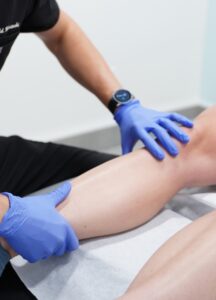
No, most minimally invasive spider vein and varicose vein treatments are painless and comfortable. That’s because we perform most of the vein treatments under local anesthesia or topical anesthesia, depending on the treatment. Furthermore, while performing radiofrequency ablation or endovenous laser ablation, we deliver tumescent anesthesia to protect the tissues around the diseased vein and prevent discomfort. You may experience mild cramping and burning sensations during sclerotherapy, but these sensations are temporary.
How can I repair my veins naturally?
Chronic venous insufficiency occurs when your vein valves malfunction or collapse, making blood flow backward and accumulate in leg veins. As such, the only way to treat varicose veins and spider veins is through medical intervention — the diseased vein must be closed or collapsed, allowing the accumulated blood to reroute into healthier leg veins to restore effective blood circulation to the heart. As such, you can’t repair your veins naturally.
While you can’t repair veins naturally, you can incorporate some lifestyle changes to minimize the risk of vein disease and improve blood circulation to the heart:
- Wear compression stockings regularly
- Engage in cardiovascular activities, such as running, cycling, and swimming
- Elevate your legs above your heart’s level while sitting
- If you have a desk job, take short walking breaks every 30 minutes
